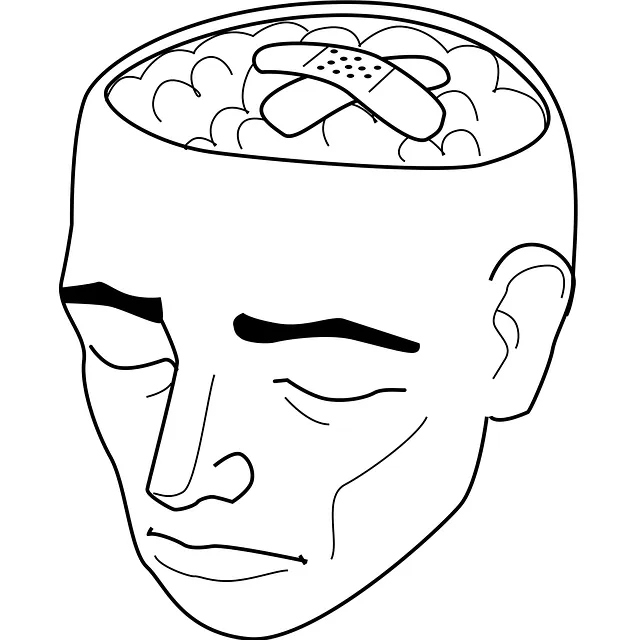Kaiser Trauma Therapy (KTT) offers a revolutionary, evidence-based approach to healing complex psychological trauma through non-traditional techniques like exposure therapy and cognitive behavioral therapy (CBT). Its online certification equips mental health professionals to assist individuals with anxiety disorders and trauma-related conditions. KTT integrates diverse modalities in serene settings, encouraging active participation for desensitization, ultimately helping patients reclaim their lives. Rooted in empirical research, this holistic method combines mind-body techniques, CBT, EMDR, and energy healing for comprehensive trauma recovery, fostering resilience and improved quality of life. Though implementing KTT presents challenges, ongoing training and flexibility enable healthcare providers to harness its positive transformative power.
Discover the transformative power of Kaiser Trauma Therapy, a groundbreaking approach revolutionizing mental health care. This evidence-based model, rooted in extensive research, offers a comprehensive path to recovery for individuals facing traumatic experiences. From understanding the core principles to exploring its practical application, this article delves into the key components and significant benefits of Kaiser’s trauma therapy. Learn how it overcomes challenges in clinical settings and empowers patients to heal.
- Understanding Kaiser Trauma Therapy: A Brief Overview
- The Principles Behind the Evidence-Based Approach
- Key Components of Kaiser's Trauma Treatment Model
- Benefits and Impact on Mental Health Recovery
- Implementation and Challenges in Clinical Settings
Understanding Kaiser Trauma Therapy: A Brief Overview

Kaiser Trauma Therapy represents a pioneering approach to addressing complex psychological trauma. This evidence-based method focuses on helping individuals process and heal from traumatic experiences by utilizing non-traditional therapy techniques, such as exposure therapy and cognitive behavioral therapy (CBT). The kaiser method certification online offers a structured path for mental health professionals to learn this specialized skill set, enabling them to assist those suffering from anxiety disorders and other trauma-related conditions.
By integrating various therapeutic modalities, the kaiser trauma therapy approach aims to facilitate profound and lasting healing. These retreats, often held in serene locations, provide a safe space for individuals to confront and overcome their traumas. Unlike traditional talk therapy, this method encourages active participation through hands-on activities and experiences designed to desensitize patients to triggering stimuli. Such non-traditional approaches have proven highly effective in helping people reclaim their lives and find new purpose after traumatic events.
The Principles Behind the Evidence-Based Approach

The evidence-based approach, a cornerstone of Kaiser Trauma Therapy, is rooted in the belief that understanding and addressing trauma are essential for profound and lasting healing from abuse naturally. This method prioritizes empirical research and data to guide therapeutic practices, ensuring that interventions are both effective and tailored to individual needs. By integrating evidence from various scientific disciplines, the Kaiser approach offers a comprehensive framework for trauma healing retreats near me, catering to folks seeking recovery from past traumas.
The principles behind this approach focus on creating safe spaces where individuals can confront and process their traumatic experiences. Through structured programs and personalized support, the Kaiser method success stories demonstrate that healing is accessible. This holistic therapy goes beyond traditional talk therapy, incorporating innovative techniques and strategies to empower individuals in their journey towards emotional well-being.
Key Components of Kaiser's Trauma Treatment Model

Kaiser’s Trauma Treatment Model is a comprehensive approach that integrates several key components to address trauma effectively. One of the core elements is mind-body techniques for trauma victims, focusing on integrating emotional and physical healing. This involves practices like mindfulness, yoga, and progressive muscle relaxation, which help individuals reconnect with their bodies and process traumatic memories in a safe and supported manner.
Additionally, the model incorporates non-traditional therapy for anxiety disorders, drawing from evidence-based practices such as cognitive behavioral therapy (CBT) and eye movement desensitization and reprocessing (EMDR). These techniques are tailored to help trauma victims manage anxiety symptoms, process distressing memories, and develop healthier coping mechanisms. The integration of energy healing for post-traumatic stress further enhances the therapeutic process by addressing the subtle energy systems in the body that can hold residual trauma.
Benefits and Impact on Mental Health Recovery

The Kaiser’s evidence-based approach to trauma therapy offers a multitude of benefits for mental health recovery. By focusing on gentle ways to overcome trauma, this method empowers individuals to heal from post-traumatic stress disorder (PTSD) in a safe and supportive environment. The approach integrates various therapeutic techniques that cater to the complex needs of those affected by traumatic events, providing an effective alternative to conventional treatments.
This holistic strategy not only addresses the symptoms of PTSD but also fosters resilience and emotional well-being. Many who have undergone Kaiser trauma therapy report improved coping mechanisms, better stress management, and enhanced overall quality of life. It provides individuals with practical self-help tools for complex PTSD, promoting a more natural and sustainable recovery process. Through these gentle methods, those affected by trauma can begin to reintegrate into their daily lives, reclaiming a sense of safety and peace.
Implementation and Challenges in Clinical Settings

Implementing Kaiser Trauma Therapy (KTT), based on evidence-backed practices like emotional processing therapy variations, in clinical settings presents a set of challenges. These include integrating novel techniques into established care models and adapting treatments to individual patient needs and cultural contexts. Despite these hurdles, KTT’s effectiveness in addressing post-traumatic stress disorder (PTSD) alternative treatments has been well-documented, offering hope for improved patient outcomes.
Clinicians face the task of learning and mastering new therapeutic approaches, requiring ongoing training and support. Furthermore, balancing the specific needs of diverse patient populations while adhering to evidence-based protocols demands flexibility and critical thinking. However, with consistent practice and a commitment to quality care, these challenges can be overcome, allowing healthcare providers to harness the power of KTT for positive psychological transformation in their patients.
Kaiser Trauma Therapy represents a significant advancement in evidence-based practice, offering a comprehensive model that addresses the complex nature of traumatic experiences. By integrating research findings into its core principles, this approach ensures effective and tailored interventions for individuals seeking mental health recovery. The success of Kaiser’s method lies in its ability to provide sustainable support, empowering clients to navigate and overcome trauma’s lasting effects. As clinical settings adopt this innovative therapy, continued exploration and refinement will further enhance its impact, benefitting those affected by traumatic events.






